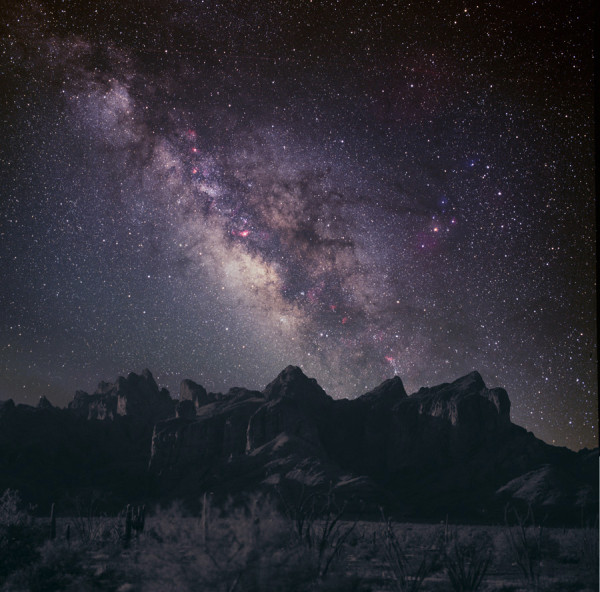“When a train goes through a tunnel and it gets dark, you don’t throw away the ticket and jump off. You sit still and trust the engineer.” -Corrie Ten Boom
When you look out into the Universe at distant galaxies, at clusters of galaxies or at the Universe on the largest scales, what you see is the luminous stuff, which is pretty exclusively stars and stellar-related objects.
 Image credit: Richard Payne (Arizona Astrophotography), via http://apod.nasa.gov/apod/ap040223.html.
Image credit: Richard Payne (Arizona Astrophotography), via http://apod.nasa.gov/apod/ap040223.html.
But based on what we know about gravitation on those scales, we know there's got to be much more mass than that, most of which doesn't emit light: dark matter. It seems like a great leap to presume that there's a new type of matter out there accounting for these observations.
 Image credit: Pearson / Addison Wesley, from J. Scott Shaw at University of Georgia, via http://www.physast.uga.edu/~jss/1020/ch22/ovhd.html.
Image credit: Pearson / Addison Wesley, from J. Scott Shaw at University of Georgia, via http://www.physast.uga.edu/~jss/1020/ch22/ovhd.html.
Could normal, non-luminous matter possibly account for all the dark matter? No, and here's why!
- Log in to post comments

I thought conventional wisdom held that that mass of the Oort cloud was about 450 Earth masses, about that of all the planets, not 300,000 Earth masses i.e. the mass of the Sun. What has changed?